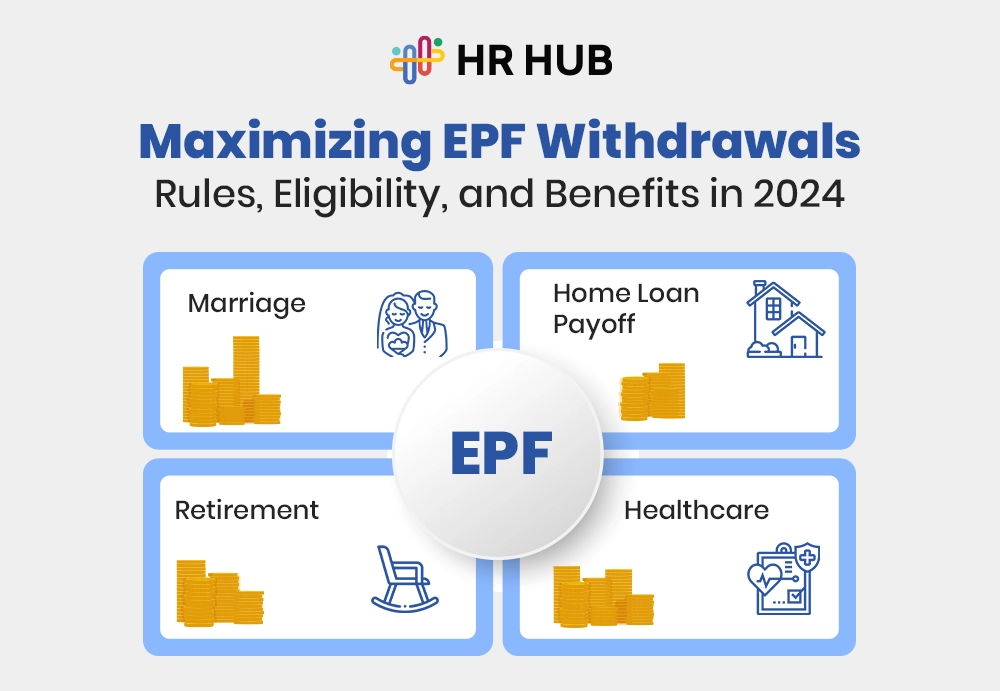Step inside any modern factory floor today and you’ll notice something striking: machines humming in sync, data flashing on digital dashboards, and workers not just operating tools, but collaborating with robots and software. Manufacturing has entered a new era—one where efficiency meets intelligence.
But here’s the thing: while automation is the visible hero, the real transformation is happening behind the scenes, in how people are hired, trained, retained, and cared for. HR is no longer just about attendance sheets and payroll slips—it’s about steering the human side of Industry 4.0. And that’s where HR software for manufacturing is quietly becoming the game-changer.
Skills Are the New Currency
For decades, the manufacturing sector has primarily hired for physical capability and stamina. Today, that’s only half the equation. Modern factories require workers skilled in programming robotics, troubleshooting automation systems, and interpreting data from IoT devices.
Take the example of automotive plants: workers are no longer just tightening bolts; they’re operating robotic arms, running simulations, and ensuring quality through software-assisted systems. This shift means HR must move from generic hiring to skill-based hiring.
And that’s only the first step. Once hired, employees must keep upgrading their skills to stay relevant. Upskilling programs are no longer perks—they’re survival tools. Here, HR software for the manufacturing industry plays a crucial role by:
- Mapping employee skill sets to organizational needs.
- Highlighting gaps and recommending training paths.
- Tracking certifications and renewal deadlines.
Think of it as giving HR leaders a live map of the workforce’s current and future capabilities.

Humans and Cobots: A New Partnership
One of the most exciting changes in factories is the rise of cobots—collaborative robots designed to work alongside humans. Instead of replacing workers, cobots often take over repetitive or physically risky tasks. This frees up employees to focus on higher-value work like precision adjustments or troubleshooting.
But here’s the challenge: this transition doesn’t happen automatically. HR has to redesign job roles, prepare workers for new responsibilities, and minimize resistance to change. If not managed well, employees may see cobots as a threat instead of a tool.
HR software for manufacturing helps leaders manage this transition in two ways:
- Workforce analytics show which roles are likely to evolve.
- Training modules prepare employees to adapt to automation instead of fearing it.
The result? A smoother human-machine collaboration that boosts productivity without disrupting morale.
Overtime and Shift Management: A Critical Priority
In manufacturing, overtime (OT) is not just a cost factor—it’s a safety and compliance issue. Excessive hours can lead to fatigue, errors, and accidents. HR leaders are focusing on:
- Real-time OT tracking with daily and weekly caps.
- Transparent shift scheduling that distributes overtime fairly.
- Comp-off/TOIL policies that give employees rest days instead of only extra pay.
- Predictive demand planning to avoid last-minute excessive overtime.
Modern HR software ensures that OT policies are enforced consistently, with clear dashboards for managers and automatic alerts for breaches—protecting both productivity and employee well-being.
Easy Joining and Smooth Releasing
Attrition is high in manufacturing, and so is the cost of slow onboarding or messy exits. The new HR trend is to simplify both ends of the employee journey:
- Fast digital onboarding: e-KYC, background checks, safety training, and access provisioning all handled in a single workflow.
- Seamless releasing: automated final settlements, no-dues clearance, access card revocation, and exit interviews captured digitally.
- Alumni engagement: keeping skilled operators or technicians in a recall database for future rehiring.
This “easy in, easy out” approach reduces downtime on the shop floor and ensures compliance during exits.
Retention Over Replacement
Manufacturing companies worldwide are struggling with high turnover, especially among shop-floor workers. Losing a trained machine operator doesn’t just mean replacing one employee—it often means weeks of reduced output while a new hire learns the ropes.
That’s why employee retention has become a top priority. Manufacturers are investing in:
- Recognition programs that reward loyalty.
- Transparent career progression opportunities.
- Financial and non-financial perks tailored to shop-floor realities.
With HR software for the manufacturing industry, retention becomes data-driven. HR leaders can:
- Monitor turnover trends across departments.
- Collect feedback through digital surveys.
- Analyze why employees leave and act before problems escalate.
Retention, in short, is no longer reactive—it’s proactive, supported by real-time HR insights.
Safety Is Non-Negotiable
Every manufacturing leader knows this: one safety incident can undo years of trust, cause operational delays, and even invite legal penalties. As machines become more complex, the margin for error shrinks.
But safety isn’t just about helmets and warning signs anymore. Companies are integrating wearables that track fatigue, IoT sensors that detect hazards, and predictive analytics that identify high-risk conditions before accidents happen.
Here’s where technology and HR meet. With integrated HR software for manufacturing, organizations can:
- Record and track mandatory safety trainings.
- Schedule refreshers automatically.
- Keep audit-ready documentation of compliance.
This makes safety part of the culture, not just a checklist. Employees feel protected, and companies stay compliant with evolving EHS standards.
Compliance That Goes Beyond Paperwork
In manufacturing, compliance isn’t optional—it’s survival. From labor laws and wage rules to safety inspections and contractor management, HR must stay ahead of regulations. The latest trend is moving from reactive compliance to proactive governance:
- Automated compliance calendars that flag due dates for training, audits, and documentation.
- Digital registers for overtime, wage slips, and health checks.
- Vendor and contractor compliance tracking to ensure supply chain accountability.
- Audit trails and role-based access to protect sensitive employee data.
This approach reduces legal risks, protects employer reputation, and fosters employee trust.
Predictive Workforce Planning
Manufacturing rarely runs on guesswork—production depends on precision. Yet workforce planning has traditionally relied on averages and estimates. That’s changing fast.
AI-powered HR systems can now forecast how many workers are needed in specific shifts based on production demand, historical absenteeism, and even seasonal spikes. For example:
- If data shows that absenteeism spikes after long night shifts, HR can rotate shifts more intelligently.
- If demand is projected to rise by 15% in the next quarter, HR can plan hiring drives.
This is where HR software for the manufacturing industry becomes more than just a record-keeper—it becomes a strategy enabler.
24/7 Operations Need 24/7 HR
Unlike many industries, factories don’t sleep. With multi-shift schedules and global supply chain pressures, HR needs to manage round-the-clock operations. Manual scheduling quickly becomes chaotic, especially across multiple plants or locations.
Modern HR platforms offer:
- Automated shift scheduling with compliance checks.
- Attendance tracking that works across devices and geographies.
- Mobile apps for employees to view shifts, apply for leave, and log attendance in real-time.
The result? Clarity for workers and efficiency for managers, without the paperwork mess.
Wellness, Inclusion, and the Human Side of HR
Manufacturing jobs are often stereotyped as physically demanding, male-dominated, and emotionally draining. But that’s changing. Companies are introducing wellness programs—ranging from ergonomic workstations to on-site counseling services. They’re also actively recruiting women, differently-abled employees, and migrant workers into roles once considered “out of reach.”
Diversity isn’t just an HR checkbox anymore—it’s a business advantage. A more inclusive workforce brings new perspectives, reduces attrition, and improves workplace culture.
With HR software for manufacturing, HR leaders can track diversity ratios, measure wellness participation, and ensure that every employee feels like more than just a cog in the machine.

Effective HR Policies: The Hidden Differentiator
Here’s a quick reality check: almost every manufacturing company has HR policies. The question isn’t “Do they exist?”—it’s “Do they actually work?”
Think about it:
- A policy that only lives in a handbook no one reads… is it really effective?
- A safety rule that isn’t reinforced on the floor… does it truly protect anyone?
- An overtime policy that looks fair on paper but exhausts people in practice… does it build trust?
This is where the new generation of HR policies is making a difference. They’re not just legal guardrails—they’re living, breathing frameworks that employees can feel every day.
What do effective policies look like in manufacturing?
- Safety-first practices backed by wearables, IoT sensors, and mandatory refreshers that workers actually understand.
- Clear OT and leave rules that employees can check on their mobile in seconds—no more guessing games or “hidden rules.”
- Digital onboarding and exit checklists that make joining and leaving smooth, instead of stressful paperwork marathons.
- Pay progression linked to skills, so a worker who upskills on CNC programming sees the reward directly in their payslip.
- Wellness and diversity measures that don’t just sound good in boardrooms, but genuinely show up on the shop floor.
The difference between a policy on paper and a policy in practice is huge. The former keeps you compliant; the latter builds loyalty, reduces turnover, and creates a workforce that’s proud to belong.
Shaping the Future of Manufacturing Workforces
The manufacturing industry is in the middle of its biggest transformation in decades. Machines are smarter, supply chains are tighter, and customer expectations are higher. Yet, the companies that will thrive aren’t just the ones that automate the fastest—they’re the ones that manage their people the smartest.
That’s why adopting HR software for manufacturing is no longer optional. It helps HR leaders balance compliance with compassion, efficiency with engagement, and innovation with inclusion.
This is exactly where HR HUB steps in. Designed to handle the complexities of modern HR—payroll, attendance, compliance, performance, and more—HR HUB is built to simplify workforce management in industries like manufacturing. From skill tracking to shift scheduling, from safety compliance to retention analytics, HR HUB ensures that HR leaders always have the tools they need to stay ahead.
Because in the end, manufacturing success isn’t just about making products—it’s about building resilient, skilled, and engaged workforces that power the factories of the future.






